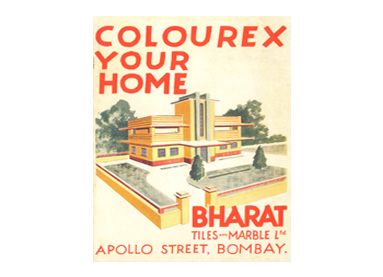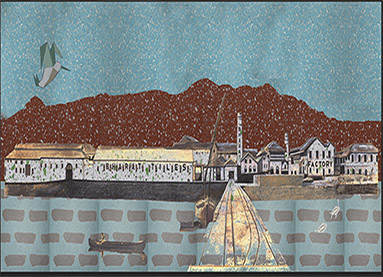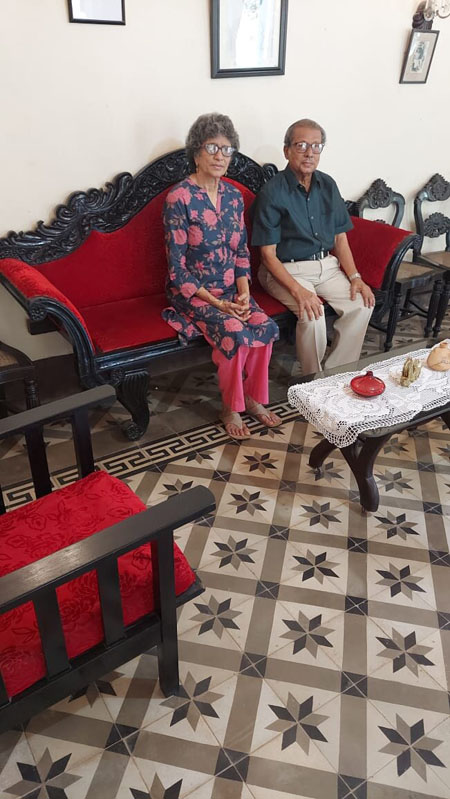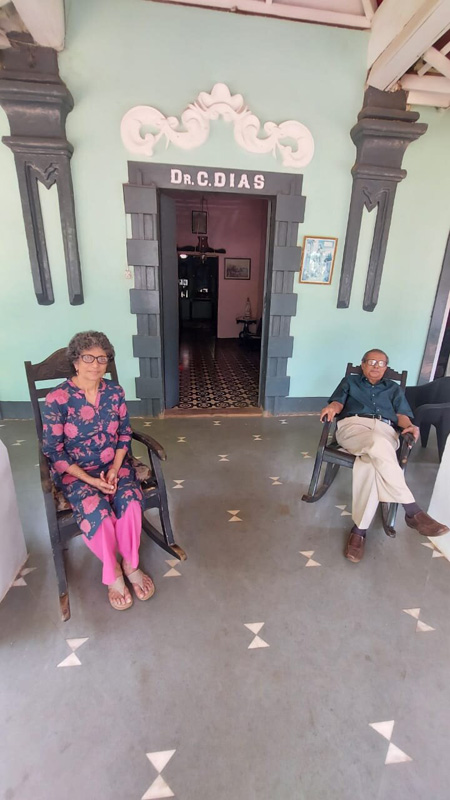100 Years
100 Stories


Adolfo Dias house in Benaulim, Goa. Courtesy: Alinto Coelho
It is one of those Old Goan houses that the locals, their parents and grandparents of the previous century are quite familiar with. A gracious traditional home, designed to keep the outside out and hold you inside with all its captive charm, it features high ceilings to make the unreasonable summers reasonable, curvaceous dark wood furniture and a delightful mix of age-old red oxide tiles, Bharat and local tiles, which according to Civil Engineer and writer Mr. Alinto D Coelho, will make you feel at home the minute you step in. It is also one of the few remnants of his family’s connection with old Goa and the nostalgia linked with the tiles and this home still “haunts” every step of his way, be it in work or life.
It was in 1940 that Mr. Coelho’s maternal great-grandfather, Francisco Adolfo Dias decided to spruce up the flooring in the main hall or the “Sala”, the prayer hall and the two bedrooms adjoining the living room in their ancestral home in Benaulim in south Goa. The house, originally named after Dr Ceatano Dias and now owned by Adolfo Dias, originally had mud flooring with a layer of cow dung over it - materials easily available at the time. However, it required weekly maintenance and the flooring graduated to that of oxide floor, which was both economical and quite distinct.
Around the same time, wealthy families who were well respected and were well-integrated members of the community would tile their homes with imported tiles from Italy or France to reflect their social standing. But then another option became available with the introduction of Indian tiles, and with materials becoming readily accessible as well as made in India, Bharat Tiles became a common occurrence in a variety of houses in Goa. So, it came as no surprise when Mr. Coelho’s grandfather, heavily influenced by the black and white star and stripe patterned floor of their relative’s home in Bandra (“he liked it so much they didn’t want to get confused with too many options’’), took the easy decision of installing a similar type of Bharat tile. He also loved the design and believed that it went with the “architecture aesthetics and the ambience of this heritage house and was very close to the Italian tile designs, complimenting his home”.
According to Mr. Coelho's many years of research, the laying of tiles has a very interesting history. "When people felt the need to showcase their house or make it more welcoming to guests, they started this trend of tiling," he said, explaining how it was part of how a family showed that it prospered. “The living rooms would be decorated with chandeliers and carved furniture, but with tiles the entire glamour set in."
On the ground floor of the Adolfo Dias house is the grandest room, the main hall or the “Sala” where parties were held and guests were entertained. It was also here one could hear shrieks of laughter on jolly evenings whenever relatives or the occasional “elite” callers visited. One could only imagine the phantoms of people dancing across the floor and children peeking in, envious of being not allowed as “not a good idea to play in the living room with chandeliers”, and hear the echoes of the bantering and all the festivities the room stood testament to. Everyone who lived here has their own memories – Mr. Coelho’s mother, who only felt solace when she visited her home, or all the summer holidays Mr. Coelho spent here with his cousins after they moved to North Goa.
Not exactly frozen in time, because improvements have been made over the years, Dias house nevertheless had an ambience firmly rooted in the 1940s Goa. Mr. Coelho’s uncle refused to remove the flooring in the main hall, for “Somehow the room became the signature for the house considering that the other part of the house didn't have such tiles, so this became like the signature space of my home”. You can still visit to walk through the rooms, feel the original Bharat floor, look at the chandeliers or run your fingers over the age-old furniture. And then sit in the main hall, sip your tea and talk, just like old people do in any home across the world.
You may also like
-
 64Archival Find: Colourex CatalogueA vibrant, witty booklet merchandising coloured cement plaster from the 1930s. Here you can read more about the product that shaped many a Bombay Deco facade.Read More
64Archival Find: Colourex CatalogueA vibrant, witty booklet merchandising coloured cement plaster from the 1930s. Here you can read more about the product that shaped many a Bombay Deco facade.Read More -
 03Rustom Sidhwa: You Can’t Run A Business If You Can’t Run With ItBharat’s founder Rustom Sidhwa was an eclectic soul. Often found experimenting with cement mixtures on the weekends. Know more about the man who could solve any problem, sometimes with an ice cream, sometimes with a nugget of advice.Read More
03Rustom Sidhwa: You Can’t Run A Business If You Can’t Run With ItBharat’s founder Rustom Sidhwa was an eclectic soul. Often found experimenting with cement mixtures on the weekends. Know more about the man who could solve any problem, sometimes with an ice cream, sometimes with a nugget of advice.Read More -
 04"The Country's largest and most efficient power factory"The site of hundreds of creative experiments, installed with the top of the line equipment imported from faraway Europe. Bharat's Uran factory was where it all began.Read More
04"The Country's largest and most efficient power factory"The site of hundreds of creative experiments, installed with the top of the line equipment imported from faraway Europe. Bharat's Uran factory was where it all began.Read More



